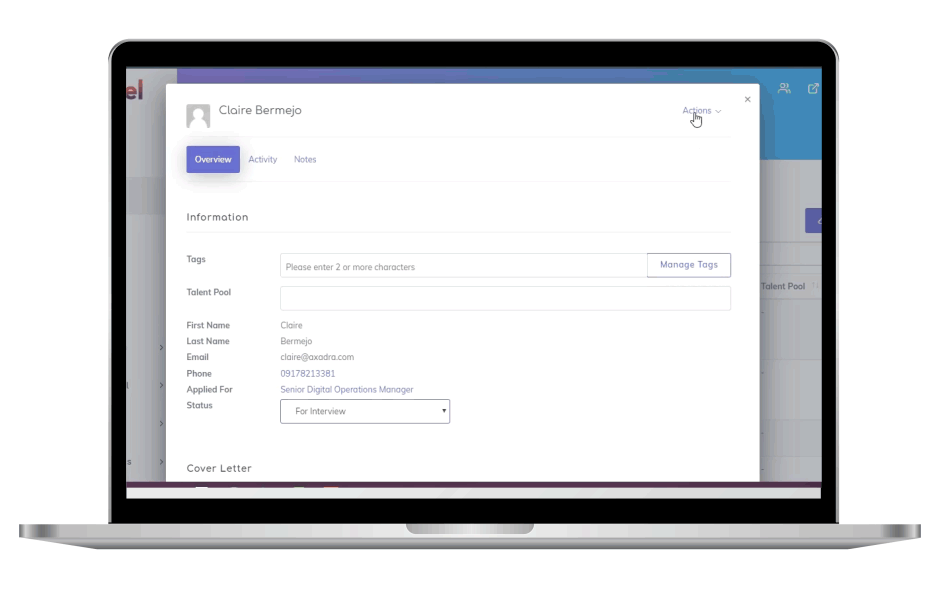Over 73% of recruitment professionals worldwide say that talent shortage is one of the most significant challenges in their hiring efforts, according to a 2019 report by cloud computing firm Bullhorn. Fast-paced pay increases came in second, with 38% of HR professionals stating difficulties with it. And employee churn rates came in third, as 27% of recruiters struggled with it in the previous year.
While these difficulties may mostly come from outside factors, there’s always a way to improve your recruitment system and breakthrough the hiring difficulties you’re facing. A simple yet effective way to do this is to get your team to subscribe to the four disciplines of execution.
The Disciplines
The four disciplines of execution, also known as 4dx, is a leadership guide that, according to one of its authors Chris McChesney, provides realistic steps to help create a “winnable game” for the reader. The game, in your case, is making sure that every position in your company is populated by quality employees. But with all the hiring challenges you may be facing, you may think that you’re on your way to defeat.
It’s this whirlwind of difficulties that prevent over 200,000 leaders worldwide from achieving their business objectives, according to a study by the 4dx authors. So, they created a system to help people navigate through the challenges of their careers. It’s split into four disciplines.
- Focus on a wildly important goal.
- Act on your lead measures.
- Keep a tight scoreboard.
- Keep everyone involved accountable.
So what do they mean, and how can you apply them to your recruitment process steps?
Focus on a Wildly Important Goal
As a hiring manager, you’re likely juggling multiple recruitment goals at once. Your company’s departments may be pressuring you to onboard more workers. Your general manager could be asking you to revamp your employee referral policies. Or maybe you’re looking to improve your firm’s career page.
Whichever the case, you know you have an overall objective in mind: to have a good and speedy recruitment process. An effective recruitment process lets you gain a competitive advantage, driving a snowball effect on your company’s performance. It also reduces costs, supports your employer brands, and improves the candidate experience. It leaves you perfectly placed to be competitive and grow faster by taking advantage of new business opportunities.
The 4dx, however, recommends focusing on a wildly important goal or “WIG” first. While a good recruitment process is a great WIG on its own, McChesney says that to find your WIG, you need to identify a goal that can’t be achieved without special attention.
An example of a WIG in recruiting would be “increasing the number of hires through referrals by x% by [date]” A well-executed referral program can net you highly-engaged workers faster than the traditional method. However, revising or creating a referral policy, orienting workers about it, and executing it takes a lot of time and effort to do.
Act on Your Lead Measures
The book defines the metrics you use to measure the success of your WIG as a “lag measure.” For you, this could be the number of hires you get from referrals monthly. This is called a lag measure because you can’t really do anything about the result as soon as you see it. 4dx suggests focusing on “lead measures” or actions your team takes to get favorable lag measures.
A lead measure can be the number of referral candidate interviews your team conducts every week or the number of referrals you get from employees every week. Brainstorm with your team on how to improve these figures, and you’re well on your way to success.
Keep Track of Performance
Your lag and lead measures won’t mean much if you’re the only one who can track and see them. The book says that teams are more engaged to perform better when they can keep track of their scores. They won’t just know how well they’re doing, but they’ll also feel like they’re influencing your project’s success. Put your lead and lag measures on display on a shared monitor or a whiteboard in your department. You could even provide rewards to those who get the best scores every month.
Stay Accountable

The last discipline in the guide involves providing each team member a feeling of accountability. The authors say that the most effective way to do this is through short daily or weekly meetings. There, each member will discuss what commitments they’ve met so far and what commitments they plan on achieving next to contribute to the scoreboard.
In this case, it’s the target number of interviews or hires your members to need to get. This way, the book says, your workers will stay on top of their work because they made a promise to reach their targets to their bosses and themselves.
The four disciplines of execution can help your team achieve more by worrying about fewer tasks. It’s not about abandoning your other commitments, but rather putting most of your team’s energy on the most important ones first. With 4dx, you can take on every recruitment goal individually and systematically. You’ll rest easy knowing that every WIG you achieve brings your department a step closer to success.
Want to learn more great recruitment practices? Check out this guide.











